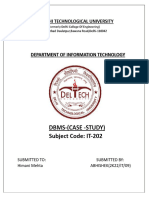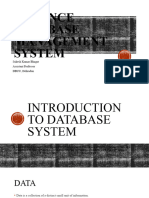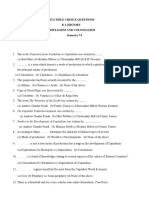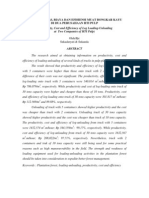0% found this document useful (0 votes)
3 views40 pagesData Analytics - My Notes
Data Analytics involves collecting, cleaning, analyzing, and interpreting data to derive insights for decision-making. It includes steps such as data collection, cleaning, analysis, visualization, and decision-making, with types like descriptive, diagnostic, predictive, and prescriptive analytics. Various tools and databases, such as Microsoft Power BI, Oracle, and MongoDB, support data analytics across different industries.
Uploaded by
kishore kumar ashokCopyright
© © All Rights Reserved
We take content rights seriously. If you suspect this is your content, claim it here.
Available Formats
Download as DOCX, PDF, TXT or read online on Scribd
0% found this document useful (0 votes)
3 views40 pagesData Analytics - My Notes
Data Analytics involves collecting, cleaning, analyzing, and interpreting data to derive insights for decision-making. It includes steps such as data collection, cleaning, analysis, visualization, and decision-making, with types like descriptive, diagnostic, predictive, and prescriptive analytics. Various tools and databases, such as Microsoft Power BI, Oracle, and MongoDB, support data analytics across different industries.
Uploaded by
kishore kumar ashokCopyright
© © All Rights Reserved
We take content rights seriously. If you suspect this is your content, claim it here.
Available Formats
Download as DOCX, PDF, TXT or read online on Scribd
/ 40






















































































